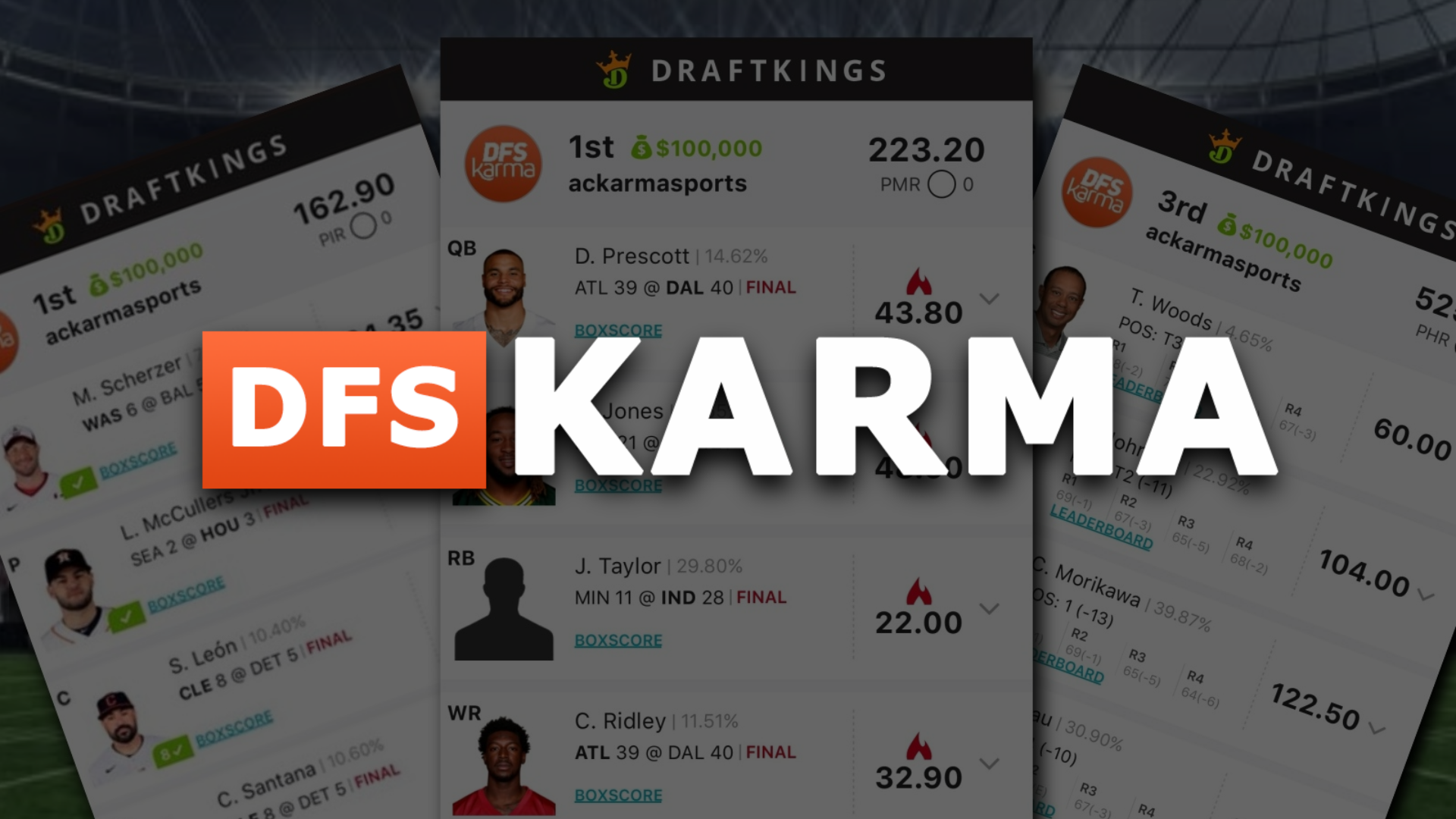
Welcome back to the Data Viz DFS NFL Preview utilizing data science & data visualizations. Today we will be previewing the TE position utilizing targets per game, red zone targets, & TDs. If for some reason you missed the WR Preview make sure to check that out before you keep reading.
Now that everyone is all caught up, let’s get into the analysis. See below for some key definitions that will help navigate the rest of the article.
Key Definitions
Outlier: If a value is more than 2 standard deviations away from the median, that data point is identified as an outlier. Basically a person or thing that differs significantly from the other members of that data set.
Standard Deviation: Standard deviation is a number used to tell how measurements for a group are spread out from the median, or expected value.
1 Standard Deviation: Data within 1 standard deviation of the median can be considered fairly common and expected. Essentially it tells you that data is not exceptionally high or exceptionally low. 68% of the population falls within 1 standard deviation.
2 Standard Deviations: Data that lies within 2 standard deviations of the mean accounts for 95% of the population. Basically the majority of the population (95%) will fall within 2 standard deviations of the median. All values outside 2 standard deviations are the outliers of the group.
Median: The value or quantity lying at the midpoint of a data set. Basically there is an equal probability of falling above or below the median.
Imagine beasting college ball, then getting drafted, then starting – but never truly getting to the pinnacle of your positon. That player in it’s own right is an outlier – someone that differs significantly from the other members of that data set (human populaion in this case). That beast of an athlete – is actually just average when compared to a different data set (NFL players). The players that make that player look average are the players we will be focusing on – the crem dela crem of the tight end position. The true outliers.
I’m going to reinsert a part of the WR preview because I think it is important for this audience to read. If you are a steady reader and have already seen it – skip down to the visual.
“Outliers are those who have been given opportunities and who have had the strength and presence of mind to seize them.” – Malcolm Gladwell
I doubt Gladwell was talking about fantasy football when he said the above quote – but man it feels like he was. Let’s reword it so it makes sense when analyzing fantasy football. So instead of saying ‘Outliers are those who have been given opportunities” let’s re-word it to say ‘Outliers are those who have been given high targets per game & high red zone targets.” And instead of saying “who have had the strength and presence of mind to seize them” lets say “who have had the strength to convert these to TDs.”
We will be utilizing this new quote as the foundation of this article: “Outliers are those who have been given high targets per game / high red zone targets and who have had the strength to convert these to TDs.”
The purpose of our first visual is to show what TEs are outliers when looking at fantasy points per game. This was executed utilizing a dot plot where the y-axis is fantasy points per game (PPR) & each dot represents a different TE. The size of the circle is based on total TDs & the color is based on targets per game (blue is good & orange is bad). The median amount of fantasy points per game is 3.25 for the TE position & the grey area represents 2 standard deviations from the mean.
Key Takeaways:
Fantasy Points Per Game Outliers (PPR): Austin Hooper | Hunter Henry | Darren Waller
Of the 9 top scorers – 8/9 average > 6.9 targets per game. This tells us you have to be targeted heavily to be a top fantasy TE.
The median is low due to the volume of TEs that have played but do not play regularly – this number would be much higher if we limited the position by snaps played.
The purpose of our next visual is to show what TEs are outliers when looking at targets per game & red zone targets. This was executed utilizing a scatter plot where the y-axis is targets per game & the x-axis represents red zone targets. Each circle represents a different TE, the size of the circle is based on total TDs, & the color is based on fantasy pts per game (PPR) – blue is good & orange is bad. The median amount of targets per game is 3, the median amount of red zone targets per game is 3, & the grey shaded area represents 2 standard deviations from the mean.
Zoomed In View Of The Outliers:
Key Takeaways:
The 3 pts per game outliers from the previous viz (Austin Hooper, Hunter Henry, & Darren Waller) are also outliers in this scatter plot. This is a good indication that red zone targets & targets per game leads directly to fantasy points.
Travis Kelce is by far the most targeted red zone TE – but does not convert those in TDs. Kelce is obviously one of the top tight ends in the NFL and is normally priced as the top TE each week. As you can see from the graph above – Kelce is targeted heavily in the red zone (13) & heavily targeted overall (8 targets per game) – but he has only scored 2 TDs. I think Kelce is a safe bet going forward, but it just depends on if you want to spend on the TE position. With Mahomes back and healthy he will be worth it certain weeks – considering he is the main red zone target – but may not be worth it in other weeks… and I think is one of those weeks where he is not worth it. The Titans are pretty good against TEs & have only given up 4 TDs to TEs so I will pass on Kelce this week.
I did not expect to see Gerald Everett on this list. Random Gerald popping up & ruining the party. Everett is by far the lowest scoring TE in this graphic (5.25 & next lowest is 7.22) & the only TE to have less than 300 yards receiving on the season – but with such a large frame he is targeted heavily in the red zone. His 8 red zone targets makes him tied for 3rd amongst the outliers & he receives a very high percent of team air yards (which leads to points if we remember last weeks article). Pittsburgh has been lackluster vs TEs – giving up the 4th most TDs to TEs (5). I’m going to go out on a limb and say Everett gets in the red zone this week – start him.
Austin Hooper is a monster. Hooper has clearly been the number 1 TE this year – which is a bit of a suprise considering Kelce has been fully healthy. I think Hooper will finish as the number 1 TE but does that mean he has value this week? Not necessarily. The Saints defend the TE position very well – only giving up 1 TD & 403 yards on the season. I will probably pass on Hooper this week & look for someone a little cheaper with better value.
Evan Engram & Zach Ertz are basically the same player. Engram averages about .5 a fantasy pt more than Ertz – but these two players are basically the same. They both are heavily targeted per game & in the red zone as well (9 red zone targets). I won’t be starting either player this week – Ertz is on a bye & Engram faces a Jets D that defends the TE position very well (349 yds & 1 TD on the year).
Hunter Henry is underutilized. Now granted this is written before Thursday’s game so factor that in. Henry is one of the top 3 TEs in the league – but only has been targeted in the red zone 5 times. This numbe should be much higher – closer to Kelce’s numbers – considering Rivers has a noodle arm these days. Henry is having a fantastic season, but should actually be having a better one if the Chargers targeted him in the red zone the appropriate amount of times. I expect this number to increase as the season goes on – count on Henry to come through the rest of the season.
Darren Waller > Mark Andrews – If you have the choice take Waller over Andrews. They appear to be very similar when looking at the numbers, but my gut says Waller is the better player.
Ask me any questions about Data, Visuals, DFS, etc. on Twitter (@StephenDataViz) or Instagram (@StephenDataViz)









